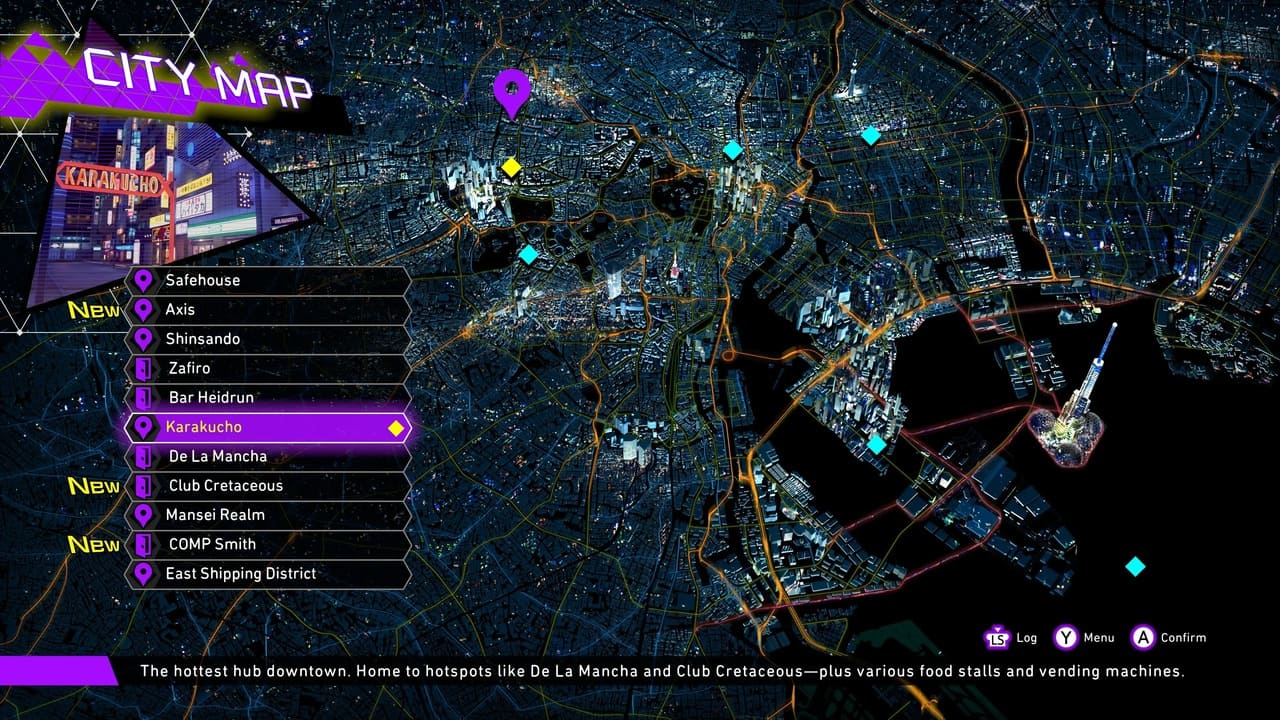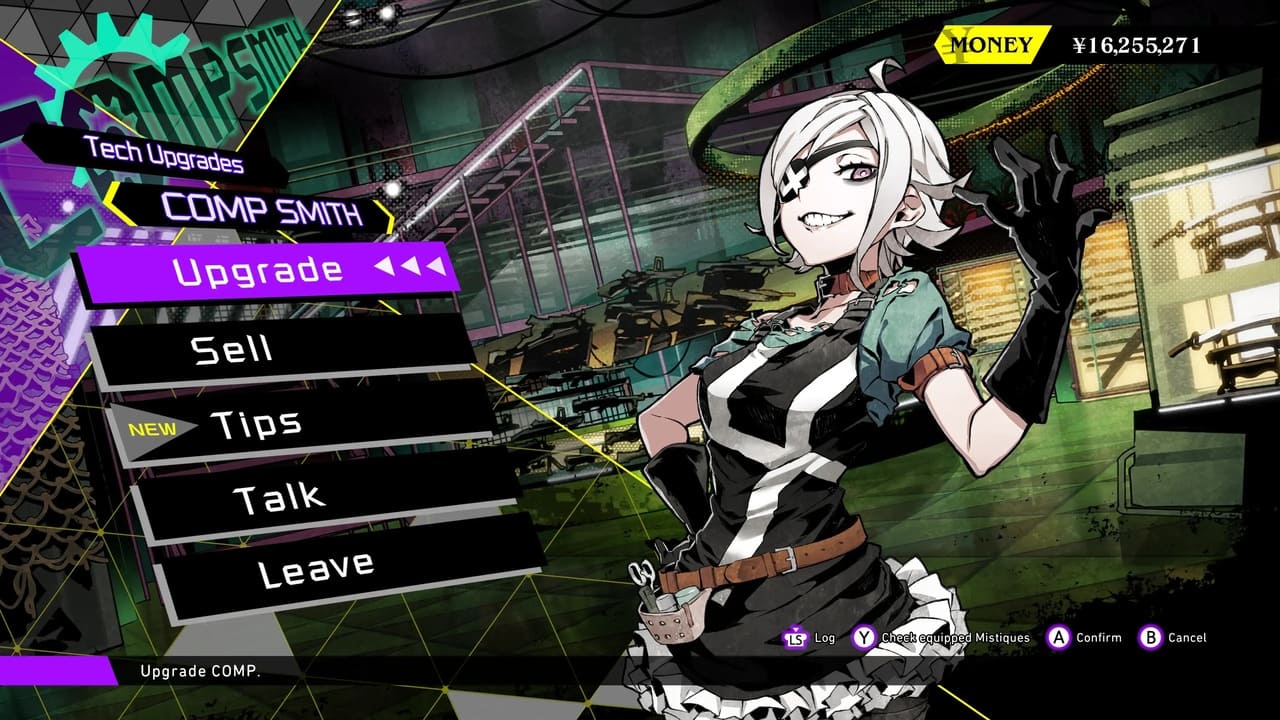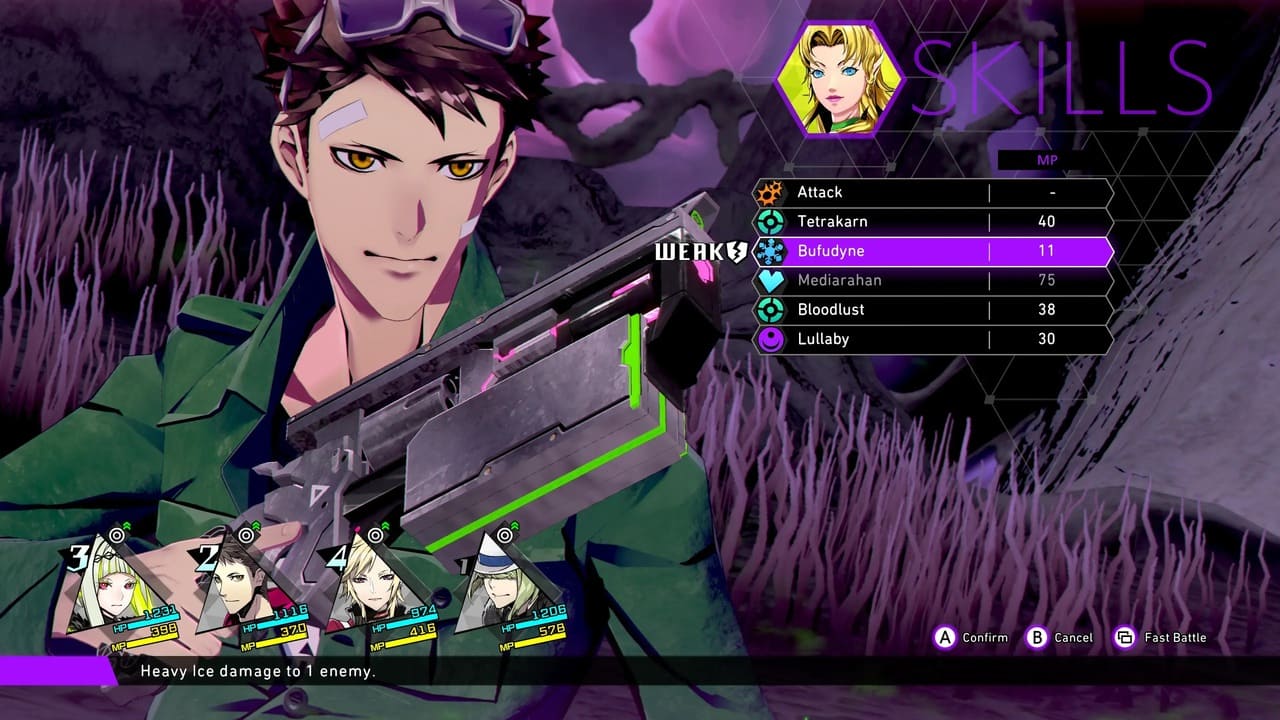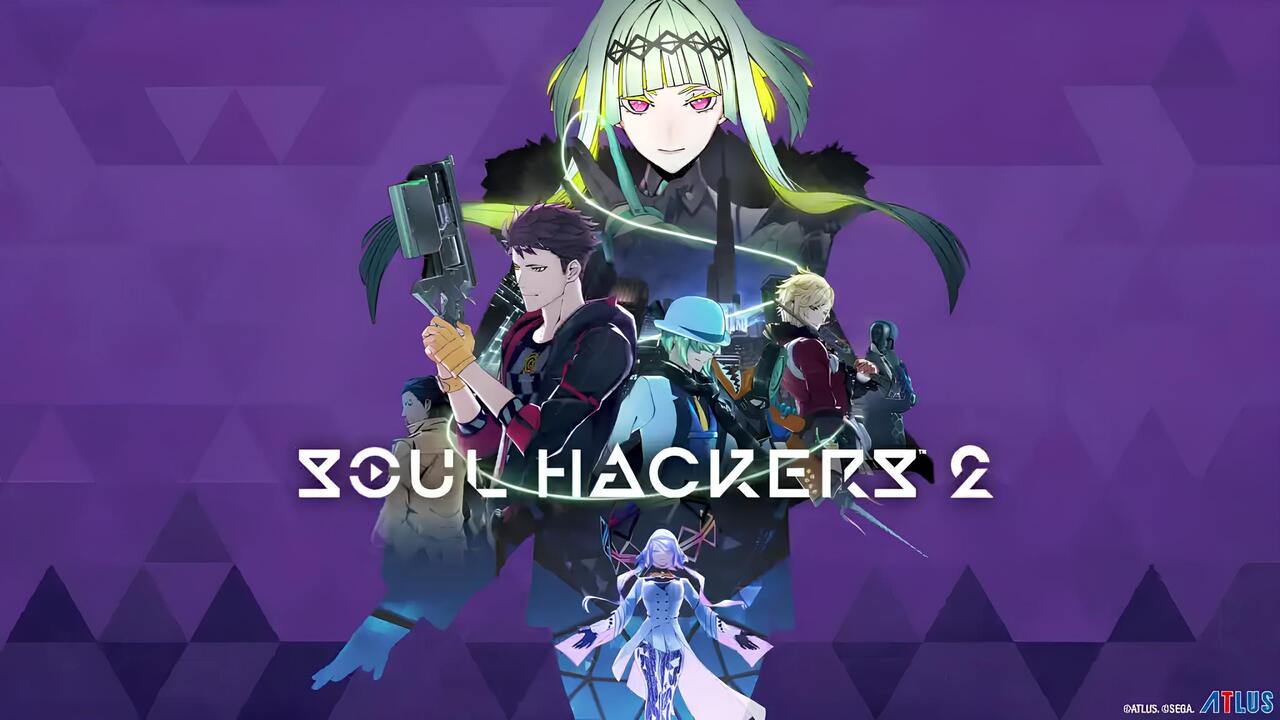Soul Hackers 2
Released: August 25, 2022 (JP), August 26, 2022 (WW)
Developer(s): ATLUS
Publisher(s): SEGA
Platform(s):





Experienced on Xbox Series X in Performance Mode.
HowLongToBeat Time: 31 Hours | My Clear Time: 79hrs 24mins (Main + Side)
Background
On February 17, 2022, ATLUS teased Soul Hackers 2 via a cryptic Twitter account and countdown website, culminating in its reveal on February 21 for PS4, PS5, Xbox One, Xbox Series, and PC. The first Soul Hackers title in a decade and the first Shin Megami Tensei (SMT) game on Xbox since 2002’s SMT: NINE, it launched globally in August 2022 (Stenbuck, 2022).
The development team for Soul Hackers 2 includes:
- Mitsuru Hirata (Producer/Director) – Known for Radiant Historia, Tokyo Mirage Sessions #FE.
- Shinjiro Takata (Director) – Known for Devil Survivor series, Tokyo Mirage Sessions #FE, Shin Megami Tensei V.
- Shirow Miwa (Character Designer) – Known for 7th Dragon 2020, 7th Dragon III Code: VFD, Bungo Stray Dogs, Fate: Grand Order.
- MONACA (Composers) – Responsible for the game’s soundtrack, known for Nier: Automata, Drakengard 3
- Eiji Ishida (Producer/Director) – Known for Shin Megami Tensei: Strange Journey, Tokyo Mirage Sessions ?FE.
Directors Ishida and Hirata cited NieR: Automata as an influence, noting similarities in its non-human female protagonist and futuristic setting. They studied its stylish third-person camera and drew inspiration for “Realms” (secret spaces for Devil Summoners) from the John Wick series’ Continental Hotel (Epps, 2022).
In particular, we studied how that game achieves a stylish look for the protagonist, as the camera tracks them from behind in a third-person perspective. Also, as a fun fact, the secret spaces called ‘Realms’ that only Devil Summoners can enter are loosely based on the Continental Hotel from the John Wick film series”(Epps, 2022).

Experience
Prior to playing Soul Hackers 2, I have played many Shin Megami Tensei (SMT) and Atlus titles. My experience spans across SMT III: Nocturne, SMT IV, SMT IV: Apocalypse, Digital Devil Saga, Soul Hackers, Devil Survivor: Overclocked, Strange Journey, Devil Summoner: Raidou Kuzunoha vs. the Soulless Army, and Shin Megami Tensei V. Additionally, I’ve completed countless other Atlus games, which has given me a solid foundation in their distinct style and mechanics.
Shirow Miwa’s work caught my attention through his art in Fate: Grand Order, particularly with characters like Brynhildr and Sigurd. I am also familiar with his series Dogs: Bullets & Carnage. As for MONACA, their music I remember from their work on the Nier and Drakengard series.

Impressions
From the title screen, I was impressed by how artistic the game is, especially considering it is running on the latest version of Unity (at the time). Most games that run on the Unity engine that I have played don’t quite have the style Soul Hackers 2 does or look as visually appealing. If anything, it is a testament to Shirow Miwa’s art along with the rest of the art team’s skill.
The music is quite different from what I expected. The score for the original Soul Hackers was more of a cyberpunk ambiance that lent itself very well to the design of levels, such as my favorite, Vision Quest Amami Airport. The music in Soul Hackers 2 also suits the designs and plot but in a different way. For example, one of the boss battle themes evokes a vibe similar to Jotaro’s theme. While I’m not sure if it was intentional, it does enhance the fight.
Building on the streamlined battle system, Soul Hackers 2 provides a middle ground between what is expected of Persona and Shin Megami Tensei. In a way, it is reminiscent of Tokyo Mirage Sessions’ combat system, which makes sense considering the staff of this game. However, it adds more strategy with the Sabbath mechanic.
This mechanic works by creating a “stack” by hitting a target’s weakness and using tandem skills, which are unique abilities that activate during a Sabbath. As you exploit an enemy’s weakness, a demon from the stock joins the stack to do damage at the end of a turn. The more stacks you have, the more damage you deal, maxing out at 16. This mechanic is inspired by the all-out-attack from Persona.
I appreciated the more straightforward dungeon design in Soul Hackers 2. While some might find them too streamlined or bordering on generic, they contribute positively to the game’s pacing. This is a welcome change from the poorly designed dungeons seen in previous Shin Megami Tensei titles, such as the final dungeon in Shin Megami Tensei IV: Apocalypse, which often disrupt pacing and overstay their welcome.
I also appreciate that Atlus decided to keep the COMP system from the original. The characters have their COMP weapons and demons, working in tandem, giving them more synergy. You can also visit a COMPsmith shop to upgrade your character’s rank in elements, passives, and other upgrades, known as Mystiques. This provides a sizable level of experimentation that is encouraged to complement your playstyle.
Enemies in the dungeons marked as “risky enemies” tend to scale above your level and offer good rewards if defeated. Dungeons also introduce a mechanic where you encounter your demon, who can heal you, give you items, or initiate a negotiation that requires items to bring them to the party. The game includes dialogue options that grant bond points with other characters, depending on which option resonates most with them.
Hangouts with characters flesh them out beyond the main plot and include personalized dungeons called Soul Matrix, which have bond point requirements to access new floors. These grant new passives or active skills and offer significant character development and backstory revelations. However, the final Soul Matrix can only be completed in a New Game+ run, as you do not earn enough points to max anyone out in your first playthrough. Points are doubled in NG+, and the game has three possible endings influenced by your choices.
The characters and their designs were very memorable. I went out of my way to do every hangout and spend as much time with them as I could, due to how much I enjoyed the cast and their seiyuus. The main seiyuu cast features:
- Tomoyo Kurosawa (known for Mizuki from AI: Somnium Files, Sothis from Fire Emblem) as Ringo
- Nanako Mori (known for Arlecchino from Genshin Impact, Coco from Code Vein) as Figue
- Kaito Ishikawa (known for Yuzuru from SMT V, Louis from Code Vein) as Arrow
- Ami Koshimizu (known for Holo from Spice and Wolf, Ryuko Matoi from Kill La Kill, Sailor Jupiter from Sailor Moon Crystal) as Milady
- Masaya Matsukaze (known for Hidetoshi Odagiri from Persona 3, Yasuhiro Hagakure from Danganronpa) as Saizo
- Yuichi Nakamura (known for Bruno Bucciarati from JoJo’s, Joon-gi Han from Yakuza) as Iron Mask

Verdict
Soul Hackers 2 stands out with its striking visual style, a testament to Shirow Miwa’s artistry and the capabilities of the latest Unity engine. The music, shifting from the original’s cyberpunk ambiance, complements the game’s design with memorable themes that enhance the experience.
The battle system skillfully blends elements from Persona and Shin Megami Tensei, featuring the Sabbath mechanic that adds strategic depth by creating damage-dealing “stacks” through exploiting enemy weaknesses. This feature, inspired by Persona’s all-out-attack, introduces a refreshing layer of strategy.
The more straightforward dungeon design might be viewed as too streamlined or even generic by some, but it significantly enhances the game’s pacing. This improvement is particularly appreciated given the poorly designed dungeons in past Shin Megami Tensei titles, like the final dungeon in Shin Megami Tensei IV: Apocalypse, which often disrupt pacing and overstay their welcome.
The return of the COMP system enriches character interactions and customization. The COMPsmith shop further adds to this depth, offering extensive options for enhancing characters. Challenging “risky enemies” and engaging demon interactions, along with meaningful dialogue choices, deepen the overall experience.
Character development shines through engaging hangouts and the Soul Matrix dungeons, providing rich backstory and excellent replay value. With a talented seiyuu cast contributing to a memorable experience, Soul Hackers 2 surpasses the disappointment of Shin Megami Tensei V. Nearly completing all achievements in my first playthrough has me eagerly anticipating diving into the NG+ content.
TLDR
Rating: 8.0/10
In Summary: Soul Hackers 2 dazzles with striking visuals, Shirow Miwa’s art, and a stellar soundtrack. Its strategic battle system, featuring the innovative Sabbath mechanic, complements deep customization through the COMP system and Soul Matrix dungeons. The talented voice cast adds depth to the experience.
Despite its engaging gameplay, some may find the dungeon design unremarkable or the Sabbath mechanic repetitive. Additionally, locking final Soul Matrix dungeons to New Game+ might frustrate those seeking a complete experience in one playthrough. Still, for fans of Tokyo Mirage Sessions ?FE, it offers a refined, enjoyable adventure with artistic flair and strong character development.
References
- Stenbuck, K. (2022, February 21). Soul Hackers 2 is coming to PlayStation, Xbox, and PC on August 26. RPG Site. https://www.rpgsite.net/news/12420-soul-hackers-2-is-coming-to-playstation-xbox-and-pc-on-august-26
- Epps, D. (2022, August 3). Soul Hackers 2 devs took design inspiration from Nier: Automata and John Wick. Digital Trends. https://www.digitaltrends.com/gaming/soul-hackers-2-interview/
- Soul Hackers 2 (2022) Japanese Cast. BehindTheVoiceActors. (n.d.). https://www.behindthevoiceactors.com/video-games/Soul-Hackers-2/japanese-cast/
- Amami Airport (Vision Quest) – Devil Summoner: Soul Hackers – Megaten Music (May 9, 2017). YouTube Video
- JoJo’s Bizarre Adventure: Stardust Crusaders OST – Stardust Crusaders – JoJo’s Bizarre Adventures (September 8, 2014). YouTube Video
- ?????????? – MONACA – Topic (August 24, 2023). YouTube Video



Leave a Reply